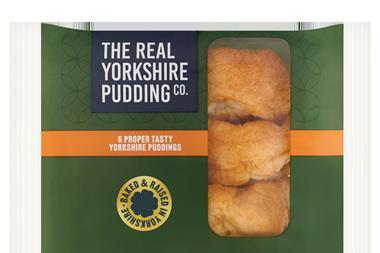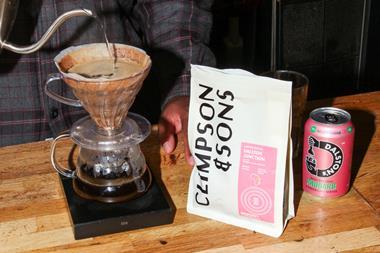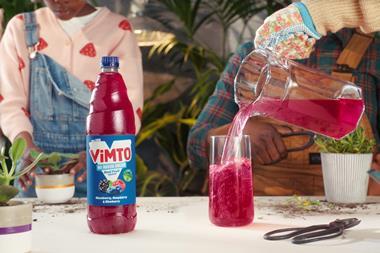Consumers are prepared to pay for upmarket flavoured and infused oils - even if the difference isn’t always clear
If most consumers struggle to detect those subtle ‘grassy notes’ or ‘hints of fresh lettuce’ that set different extra virgin olive oils apart, they’re altogether more comfortable with flavoured products.
Varieties enhanced with basil or garlic are seeing “double-digit growth”, says Remmelt Jongkind, marketing director for Princes Foods’ manufacturing division. He believes this is likely to continue because flavoured oils are so versatile - they can be used as a conventional oil or salad dressing, or as ingredients in recipes requiring both oil and a herb or spice.
It’s also easier to justify a premium price in this sub-category, since shoppers can more easily grasp what they’re getting for the extra money. But confusion remains between these and flavoured varieties. Ken Williams, marketing director of SpringThyme, Europe’s biggest producer of infused oils, says retailers have failed to explain the difference in their merchandising.
Infused oils are generally made from fresh raw materials steeped in cold-pressed olive oil, the flavours transferring naturally to the oil thanks to nothing more than the application of heat. The result is a more natural-tasting, subtle product than a flavoured oil, which is usually made by blending processed flavourings into cheaper, refined oils.
Williams says infused olive oils should command a 25-50% premium over flavoured versions, which can already be double the price of standard olive oils.
“The word ‘infusion’ generates a very positive, upmarket feel,” he says. “People
immediately link the infusion process to something organic and natural.”
Simon Bell, retail director of Merchant Gourmet, says consumers are gradually becoming more aware of the natural production methods used for infusions, which plays well with their general concerns over additives and flavourings.
A few new flavours have recently been launched. Merchant Gourmet offers a white truffle infused oil at £9.99 for 250ml. Princes’ Jongkind flags up a Parmesan-infused oil produced for Marks & Spencer. Meanwhile, oriental food specialist Blue Dragon has included ginger and spicy sesame oils in a range of infusions for flavouring Chinese and Thai dishes. But the staple varieties - garlic, basil, chilli and lemon - haven’t changed since M&S introduced them in the mid-nineties.
“Garlic now outsells all the others combined,” says SpringThyme’s Williams. Four of the top six multiples now list own-label infusions, he says, and some have tried new flavours, including rosemary, but with “limited success”.
SpringThyme’s clients include Aarhus, for which it produces the recently relaunched Chalice range. This brand claims 60% of the infused oils market, according to retail marketing manager Suzanne Heffernan. “We’ve relaunched the Chalice brand with images of fresh basil and lemon on the front of the bottles, but due to legislation there’s a limit to what you can say.”
Luckily, says Merchant Gourmet’s Bell, shoppers tend to buy speciality and infused oils for a particular recipe or out of health concerns and are less likely to be motivated by price. “They will buy these in addition to mainstream oils, provided the products have a wide enough variety of uses.”
If most consumers struggle to detect those subtle ‘grassy notes’ or ‘hints of fresh lettuce’ that set different extra virgin olive oils apart, they’re altogether more comfortable with flavoured products.
Varieties enhanced with basil or garlic are seeing “double-digit growth”, says Remmelt Jongkind, marketing director for Princes Foods’ manufacturing division. He believes this is likely to continue because flavoured oils are so versatile - they can be used as a conventional oil or salad dressing, or as ingredients in recipes requiring both oil and a herb or spice.
It’s also easier to justify a premium price in this sub-category, since shoppers can more easily grasp what they’re getting for the extra money. But confusion remains between these and flavoured varieties. Ken Williams, marketing director of SpringThyme, Europe’s biggest producer of infused oils, says retailers have failed to explain the difference in their merchandising.
Infused oils are generally made from fresh raw materials steeped in cold-pressed olive oil, the flavours transferring naturally to the oil thanks to nothing more than the application of heat. The result is a more natural-tasting, subtle product than a flavoured oil, which is usually made by blending processed flavourings into cheaper, refined oils.
Williams says infused olive oils should command a 25-50% premium over flavoured versions, which can already be double the price of standard olive oils.
“The word ‘infusion’ generates a very positive, upmarket feel,” he says. “People
immediately link the infusion process to something organic and natural.”
Simon Bell, retail director of Merchant Gourmet, says consumers are gradually becoming more aware of the natural production methods used for infusions, which plays well with their general concerns over additives and flavourings.
A few new flavours have recently been launched. Merchant Gourmet offers a white truffle infused oil at £9.99 for 250ml. Princes’ Jongkind flags up a Parmesan-infused oil produced for Marks & Spencer. Meanwhile, oriental food specialist Blue Dragon has included ginger and spicy sesame oils in a range of infusions for flavouring Chinese and Thai dishes. But the staple varieties - garlic, basil, chilli and lemon - haven’t changed since M&S introduced them in the mid-nineties.
“Garlic now outsells all the others combined,” says SpringThyme’s Williams. Four of the top six multiples now list own-label infusions, he says, and some have tried new flavours, including rosemary, but with “limited success”.
SpringThyme’s clients include Aarhus, for which it produces the recently relaunched Chalice range. This brand claims 60% of the infused oils market, according to retail marketing manager Suzanne Heffernan. “We’ve relaunched the Chalice brand with images of fresh basil and lemon on the front of the bottles, but due to legislation there’s a limit to what you can say.”
Luckily, says Merchant Gourmet’s Bell, shoppers tend to buy speciality and infused oils for a particular recipe or out of health concerns and are less likely to be motivated by price. “They will buy these in addition to mainstream oils, provided the products have a wide enough variety of uses.”



















No comments yet